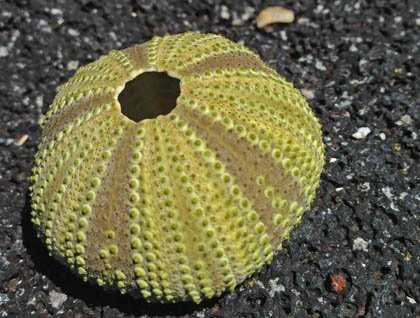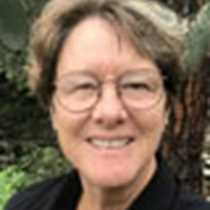This area is a strange and wonderful place here in Galapagos as we explore the western part of the archipelago. The surrounding ocean brightens as we search for cetaceans in the early morning along the Bolivar Channel, which separates Fernandina and Isabela islands. Splashes are spotted in the distance and as we approach we encounter short-finned pilot whales with their distinctive falcate dorsal fins. Among the pod there are five small dorsal fins which indicate calves among the group. We are able to have a close look at these large members of the Delphinidae family (large oceanic dolphins) as they are quite slow in the water when not diving; however, they are known to make extremely long dives of over 1000 feet searching for squid as a food source. Then, no longer than 10 minutes after finding the first group we come upon another; however, this large group is mixed with bottlenose dolphins that come to the bow of the ship to “ride” the bow wave.
This was a great start to the day, and then we arrived at Fernandina Island. The landing here is tricky as we disembark onto a black basalt lava flow that has been occupied by hundreds of Galapagos marine iguanas. Obliviously this is a highly productive area for the marine iguanas as we have to step over many of these unique creatures. The western zone of the archipelago has a high primary productivity in the ocean due to the cold Crowell upwelling current that comes along the equatorial line and encounters the Galapagos plateau and brings nutrients close to the surface.
Espinoza Point is the only land visitor site on Fernandina, as the island is pristine and the national park service is trying to prevent any introduction of invasive species. Being our youngest island the basalt terrain is otherworldly as we make our way to the point that is jutting out from the coast. A couple of Galapagos hawks fly overhead and land in the large white mangrove trees. The hawks maintain an eye on us we pass among the endemic lava cacti that are pioneer species, allowing soil to be produced for future species to arrive eventually. A strange movement offshore grabs our attention and a large dorsal fin that only could belong to a large male killer whale is seen. We are able to witness an attack on a sea lion as the whale thrashes numerous times close to the surface and then disappears, leaving all of us in awe of nature’s brute force. Pacific green sea turtles pop their heads up for a breath of air in the shallows as we head to the point. Flightless cormorants are courting on a small beach while others tend nests which contain various eggs. A Galapagos western racer snake slithers into the salt brush as we return to our landing site. It is incredible to think that what we have experienced has only happened in our first half of the day.
The cloud cover has lifted as we navigate towards northern Isabela and we have a remarkable view of the shield volcanos of Isabela and Fernandina. Upon arrival to Punta Vicente Roca, very close to the equatorial line, we disembark to explore the undersea world here. Almost immediately we encounter a Galapagos penguin swimming among the snorkelers. Pacific green sea turtle are everywhere as this is a resting area in a small bay. These encounters are incredible as a Galapagos flightless cormorant pecks at a guest maybe thinking this could be the “catch of the day.” Diamond sting rays line the sandy bottom as we come to an end of our snorkeling. A quick change and we are off again for a Zodiac ride along the massive cliff walls of Ecuador volcano and we witness flightless cormorants and penguins drying off and preening after their foray into the ocean. Our Captain Fausto lifts the hook and we navigate towards the equator, all the while having a ceremony on the fore deck for our new “shellbacks” as we cross the line into the northern hemisphere.
Strange, wonderful, and otherworldly are words that can be used to describe this magical place; however, we are finding that we are at a loss for words as the sun dips at the horizon.









